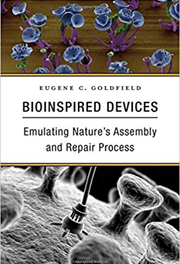Bioinspired Devices: Emulating Nature’s Assembly and Repair Process
 Eugene C Goldfield
Eugene C Goldfield
Harvard University Press, £32.95
Bioinspired designs have come a long way since Ovid’s story of Daedalus and his legendary attempt to make wings. George De Mestral’s invention of Velcro in 1948, inspired by burdock burrs, has certainly been far more successful. Nature-inspired research has influenced innovation in fields as diverse as medicine, engineering and renewable energy technology, to name a few.
There are now a number of academic journals devoted to biomimetics, bioinspired design and bioderived materials. Goldfield describes much of the research at the Wyss Institute for Biologically Inspired Engineering at Harvard.
Throughout the text, he provides up-to-date illustrations of how bioinspired research principles have been applied, bringing the work to life. With good humour, he uses examples of familiar science fiction to illustrate how far things have come. For example, Wallace and Gromit’s visit to the moon made of cheese, which features a comic vision of a self-assembling, autonomous robot skiing over the lunar landscape, is compared to real-life ‘self-healing’ materials inspired by pitcher plants.
The founding principles of design based on nature are based on physical laws and the dynamics of complex systems. Exploring these underlying principles and how they have been applied makes up the first section in the book. There are descriptions of robo-bees and soft-bodied octobots that function using microfluidic circuits rather than electrical ones.
This is followed by specific work relating to the structure, function and repairs to the nervous system that emulate responses by nature. This gives hope for possible future therapies and regenerative treatments of cerebral palsy, stroke and schizophrenia.
The readable style, interesting illustrations and humorous anecdotal accounts make this book a good read. It provides a rich tapestry of examples that will hopefully inspire further developments in the design of materials, drug action and robotic devices.
Alexander Waller MRSB


